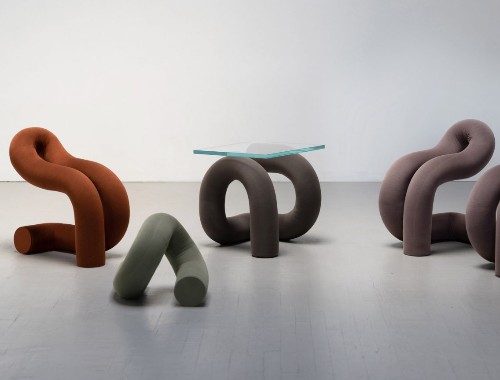
In 1914, at just
26 years of age, Kaare Klint collaborated with architect
Carl Petersen to design a unique
furniture set for the Faaborg Museum, which was officially inaugurated
in 1915. The joint effort resulted in the birth of the Faaborg Chair – a design that would later prove to be the first modern Danish design classic.
The Faaborg Chair
ushered in a new era for Danish design, creating a foundation for its
development and for what we now associate with the Danish Modern phenomenon,
which put Danish design on the world map in the 1950s.
As the
Faaborg Chair celebrates its 100th anniversary, one sees the extent to which Kaare
Klint’s oeuvre in general – and the Faaborg Chair in particular – advanced the evolution
from neoclassicism to modernism, and why Klint’s works are regarded
as hallmarks of Danish furniture design. The Faaborg
Chair is, to this day, an integral part of the gesamtkunstwerk (total work of art) that is the Faaborg Museum, where
the 18 historic chairs remain on permanent display in the large exhibition hall.
For generations, the Faaborg Chair has
been manufactured by the Rud. Rasmussen joinery – a workshop renowned for its
uncompromising approach to traditional furniture craftsmanship and its
dedication to creating design classics of unsurpassed quality since 1869. Knud
Erik Hansen, owner of Rud. Rasmussen and Carl Hansen & Søn, notes: “Our acquisition of Rud. Rasmussen was an affair of the heart
– one that reflects our desire to honor Danish craftsmanship traditions and
tell the story of Danish furniture classics. We have big ambitions of expanding
awareness of this era in Danish design history, particularly the first 30 years
of the 20th century – a period in which Denmark’s oldest joinery and
Kaare Klint’s Faaborg Chair played central roles.”
David Obel Rosenkvist, CEO of Rud. Rasmussen, adds: “Rud. Rasmussen has epitomized quality craftsmanship for
generations, and we will continue to stand for the highest standards of Danish cabinetmaking.
Kaare Klint valued skilled, flawless carpentry workmanship, and enjoyed a close
working relationship with Rud. Rasmussen, which has produced the Faaborg Chair
for decades. The chair’s centennial offers the perfect occasion to pay tribute
to Denmark’s first modern design classic created by the father of Danish
furniture design.”

Ten-piece special edition in elm burr
In
celebration of the centennial, Rud. Rasmussen is releasing a special edition of
the Faaborg Chair. Like the original, it is crafted from burr wood, which forms
when a tree’s fibers bend, twist, and become intertwined during growth,
creating irregular patterns. The special edition uses burr from an elm that
stood in Rud. Rasmussen’s back courtyard for 100 years and was felled 25 years
ago. An elm with a unique history that Rud. Rasmussen was saving for the right
occasion.
The chair's iconic rounded backrest will be crafted from the
unique elm burr – a material that, due to the wood’s unusual structure and
grain pattern, is difficult to work with and demands great insight and patience
from craftsmen. The legs will be crafted from solid elm; the cross-pieces from
elm veneer. As with the original, there will be emphasis on selecting wood for
each part of the chair to highlight the one-of-a-kind nature and grain of each
piece of wood. Unique to this edition, the seat will be made of French rattan
like the back and sides – exactly like the original.
The special edition comprises just ten unique pieces
and will be on display as part of an international traveling exhibition in 2015. Initially, these chairs will not
be offered for sale.

Numbered anniversary
edition in walnut
As
part of the centennial celebration, Rud. Rasmussen is also launching an
anniversary edition of the Faaborg Chair made of walnut and featuring an
oil-treated surface and a seat upholstered in exclusive black Niger leather. The
first 100 of these will be numbered.





























 沪公网安备31010402003309号
沪公网安备31010402003309号